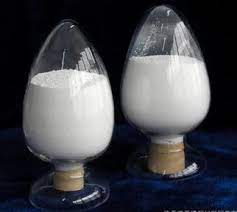Yttria (Yttrium oxide) Y2O3 Ceramic Powder
Formula | Y2O3 |
Synonyms | Yttrium oxide, Yttria |
Appearance | White Powder, |
Particle Size | -60 mesh or customize |
Melting Point | 2440℃ |
Density | 5.0g/cm³ at 25°C |
Purity | 99.9% MIN, 3N (trace metals basis) |
CAS Number | 1314-36-9 |
Description of Yttrium oxide Powder
Yttrium Oxide (Y₂O₃) powder is a white, crystalline inorganic compound known for its high thermal stability, optical transparency, and excellent dielectric properties. It is used in various high-tech applications, including phosphors for color television tubes and LEDs, as a stabilizer in zirconia ceramics, and in the production of yttrium iron garnets for microwave filters. Yttrium Oxide granules is also utilized in advanced materials such as high-performance ceramics and specialty glass due to its high melting point (around 2,410°C) and low thermal expansion.
Princeton Powder is a wholesale supplier of Yttrium oxide (Y2O3) ceramic powder, providing ceramic plates, rods, pellets, crucibles, sputtering targets, and custom shapes. With extensive manufacturing expertise, we deliver reliable, tailored solutions to effectively support your projects. Additional shapes are available upon request.
Chemical Composition
| Grade | 6N | 5N | 4N | 3N | 2N |
| Y2O3/TREO (% min.) | 99.9999 | 99.999 | 99.99 | 99.9 | 99 |
| TREO (% min.) | 99.9 | 99 | 99 | 99 | 99 |
| Loss On Ignition (% max.) | 0.5 | 1 | 1 | 1 | 1 |
| Rare Earth Impurities | ppm max. | ppm max. | ppm max. | % max. | % max. |
| La2O3/TREO CeO2/TREO Pr6O11/TREO Nd2O3/TREO Sm2O3/TREO Eu2O3/TREO Gd2O3/TREO Tb4O7/TREO DY2O3/TREO Ho2O3/TREO Er2O3/TREO Tm2O3/TREO Yb2O3/TREO Lu2O3/TREO | 0.1 0.1 0.5 0.5 0.1 0.1 0.5 0.1 0.5 0.1 0.2 0.1 0.2 0.1 | 1 1 1 1 1 2 1 1 1 2 2 1 1 1 | 30 30 10 20 5 5 5 10 10 20 15 5 20 5 | 0.01 0.01 0.01 0.01 0.005 0.005 0.01 0.001 0.005 0.03 0.03 0.001 0.005 0.001 | 0.03 0.03 0.03 0.03 0.03 0.03 0.1 0.05 0.05 0.3 0.3 0.03 0.03 0.03 |
| Non-Rare Earth Impurities | ppm max. | ppm max. | ppm max. | % max. | % max. |
| Fe2O3 SiO2 CaO Cl- CuO NiO PbO Na2O K2O MgO Al2O3 TiO2 ThO2 | 1 10 10 50 1 1 1 1 1 1 5 1 1 | 3 50 30 100 2 3 2 15 15 15 50 50 20 | 10 100 100 300 5 5 10 10 15 15 50 50 20 | 0.002 0.03 0.02 0.05 | 0.01 0.05 0.05 0.1 |
* Special requirements are available.
Applications
Yttrium Oxide (Y₂O₃) is used in phosphors for LEDs and TVs, stabilizes zirconia ceramics, enhances specialty glass, produces electronic components like yttrium iron garnets, and improves alloy properties in metallurgy.
- Phosphors: Used in color television tubes and LEDs for its luminescent qualities.
- Ceramics: Acts as a stabilizer in zirconia ceramics to enhance toughness and thermal stability.
- Glass: Incorporated into specialty glass for improved thermal and mechanical properties.
- Electronics: Utilized in the production of yttrium iron garnets for microwave filters and other electronic components.
- Metallurgy: Added to alloys to improve grain refinement and mechanical properties
Yttrium oxide (Y2O3) nanoparticle Reference
- Metal oxide nanoparticles demonstrate uniqueness in various technical applications due to their suitable physiochemical properties. In particular, yttrium oxide (Y2O3) nanoparticle is familiar for technical applications because of its higher dielectric constant and thermal stability. It is widely used as a host material for a variety of rare-earth dopants, biological imaging, and photodynamic therapies.
It is mined in China and Malaysia. Yttrium also occurs in the other ‘rare earth’ minerals, monazite and bastnaesite. Yttrium metal is produced by reducing yttrium fluoride with calcium metal.
Examples of oxides of ceramics include Al2O3, ZrO2, SiO2, aluminum silicate, magnesia, and other metal oxide-based compounds. These are categorized as inorganic, nonmetallic compounds because they contain oxygen, carbon, or nitrogen.
Yttrium oxide (Y2O3), commonly known as yttria, is a technologically important refractory ceramic material useful for a large number of applications. It has a high melting point (2410°C), shows chemical inertness, and hence is used as corrosion-resistant coating.

